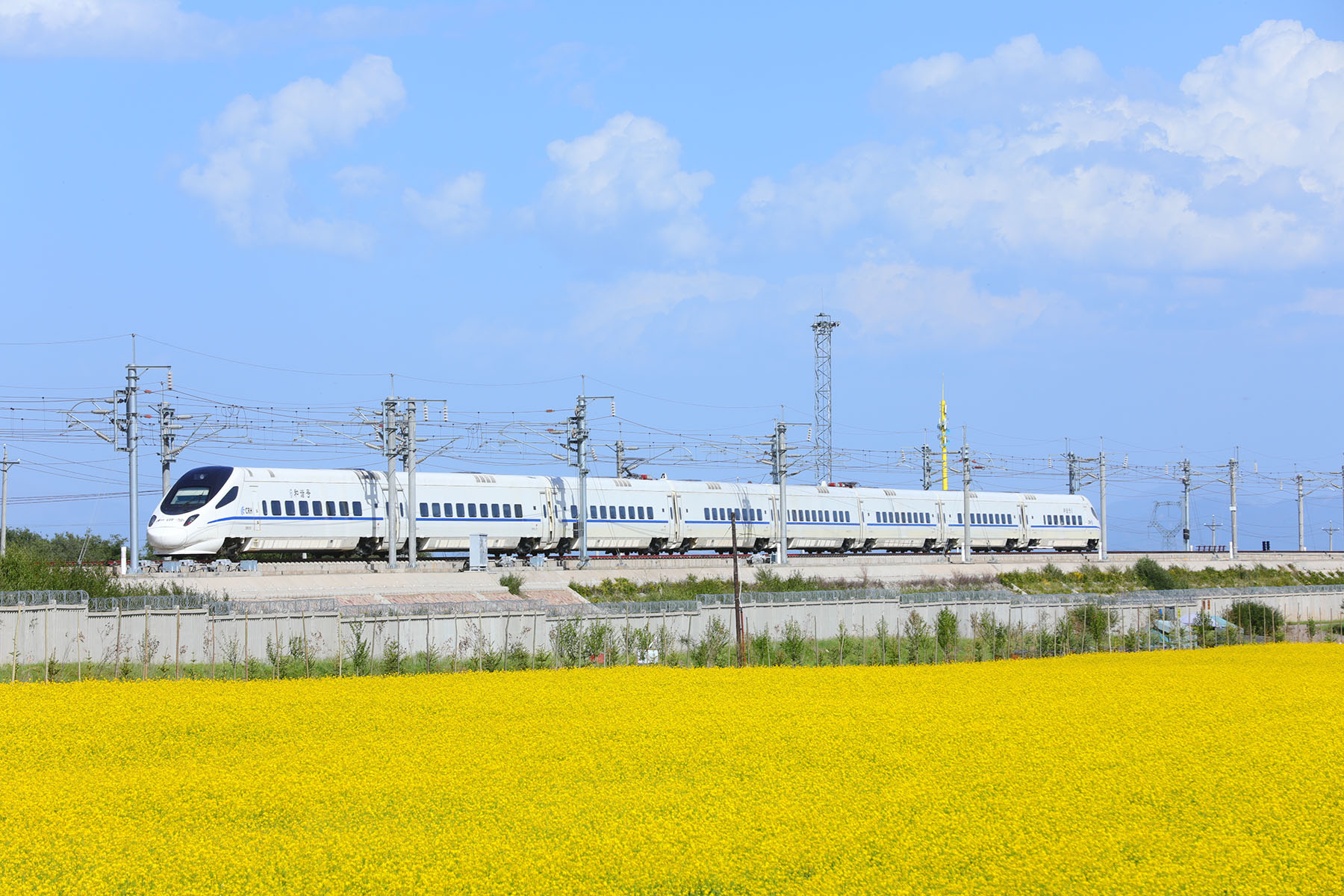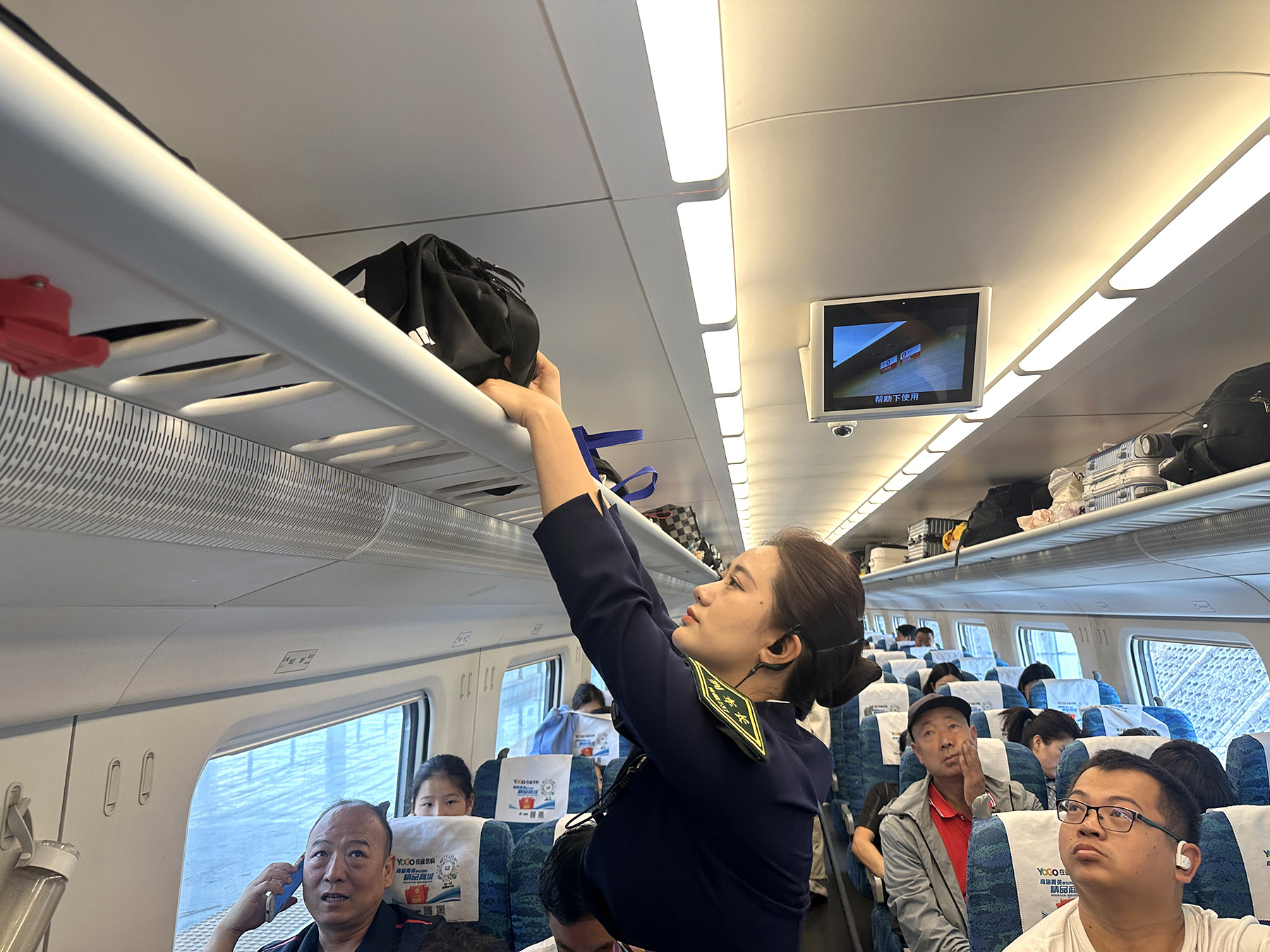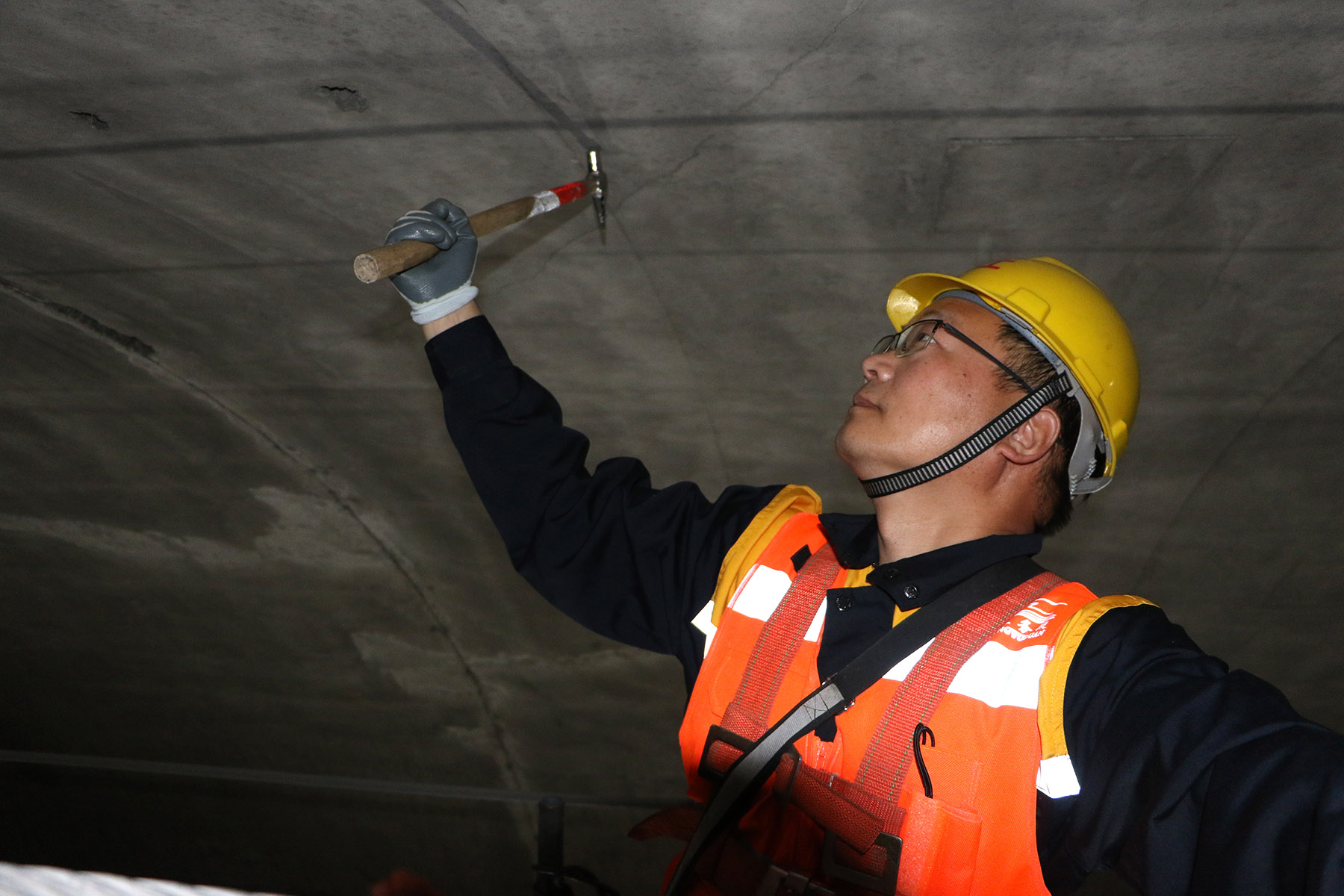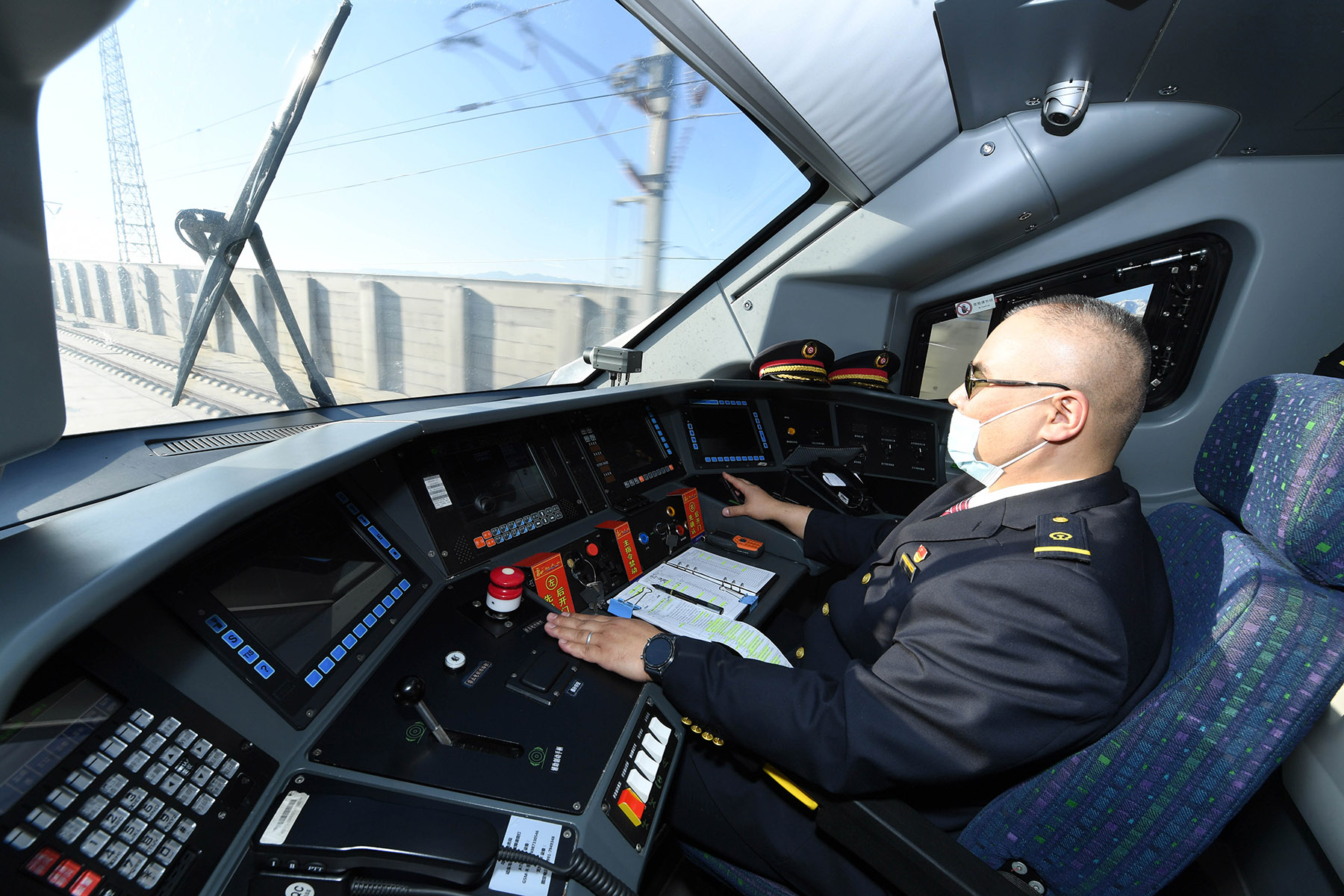1,786-km Lanzhou-Urumqi line puts growth on faster track

Each morning, the low, repetitive hum of trains on track is enough to send 50-year-old rail maintenance worker Ma Wanli to sleep in his makeshift bed in his on-site office, safe in the knowledge that his previous five-hour shift has ensured everything is running smoothly.
Ma and his colleagues, of China Railway Qinghai-Xizang Group, are responsible for a section of the Lanzhou-Urumqi High-Speed Railway in Qinghai province, stretching 218 kilometers.
Over the past decade, Ma has witnessed the transformation of various local cities from relative obscurities to tourist destinations, and attributes this to the opening of the Lanzhou-Urumqi High-Speed Railway.
The high-speed railway starts in Lanzhou, Gansu province, passes through Xining in Qinghai, and terminates in Urumqi, Xinjiang Uygur autonomous region, spanning a total length of 1,786 km.
READ MORE: Railway travel time between Xining, Golmud reduced
The railway began operation on Dec 26, 2014, strengthening connections between Northwest China and other parts of the country. In nearly 10 years, it has transported over 140 million passengers and driven the rapid economic development of cities along the route.
Ma moved from his hometown in Henan province to live in Xining, the capital city of Qinghai, with his parents when he was 7, as his parents were also railway employees working in the province.
He majored in clinical medicine in college, but influenced by his parents, learned a lot about railways and passed the examination to join the China Railway Qinghai-Xizang Group in 1996.

Ma and his team are responsible for the inspection and maintenance of high-speed railway bridges, tunnels, culverts and other critical equipment. They usually work between midnight and 4 am when the train traffic is relatively light.
Despite working at an altitude of more than 3,000 meters for the past 28 years, Ma hasn't missed a single inspection or made an erroneous judgment.
The team needs to promptly identify and address problems and hidden dangers along the route such as whether drainage outlets within protective fences are blocked, if there is floating debris, or if local residents are engaging in activities like burning waste or building sheep pens along the route's fence line.
The environmental issues along the rail line also fall within their scope. In the first few years, Ma and his team encountered villagers dumping piles of straw along the rail fences or burning waste. When they tried to dissuade them, the villagers often didn't understand and refused to cooperate, making the work difficult. They had to collaborate with village officials to address these issues.
The area is prone to strong winds, and debris on the tracks can affect train safety, Ma said. In recent years, increased rainfall and haphazard construction have led to poor drainage, also impacting safety.
After 10 years of operation, the residents around the railway tracks have developed a basic awareness of safety and understand the significant benefits of the railway's safe operation for the local community, he said.
"In maintaining the railway's normal operation, great responsibility, patience, a strong will to keep learning and a continuous spirit of innovation are required," said Ma.

Tracking change
The secret to maintaining his enthusiasm for the job after 30 years is seeing the changes brought about by the development of high-speed trains, making him feel that his work is very meaningful.
Tourism has expanded in Qinghai since the operation of the Lanzhou-Urumqi High-Speed Railway. Menyuan Hui autonomous county, located 150 km from Xining, has leveraged the rail to turn local attractions such as its rapeseed flowers, snowcapped mountains and forest parks into popular tourist destinations. This has helped residents find employment and increase their income. Last year, Menyuan's GDP reached 4.5 billion yuan ($628 million), five times that of in 2013.
Ma recalled that in the past, it took about 4 hours to travel by regular train from Xining to Lanzhou, but now it takes less than an hour by high-speed train. Residents in Menyuan county who needed to travel to Xining to visit relatives, for shopping or seeking medical treatment had to travel by car on rugged mountain roads, which took several hours. Now, the travel time has been reduced to just 38 minutes.
About 10 years ago, when Ma had training in Tianjin, his classmates asked him where he was from. When he said he was from Xining, Qinghai, they were puzzled and even asked if it was a city near Qingdao in Shandong province.
"Honestly, I had an aggrieved feeling at that time. Last year, when I went for training again, classmates chatted about the beauty of Qinghai Lake, grasslands and Menyuan's vast fields of rapeseed flowers. I felt very proud," he said.
Since the railway began operation, the number of tourists traveling to Qinghai by high-speed train has significantly increased, and the railway station in Menyuan has even had to be expanded, he said.
"Qinghai is a fantastic place known for its yak meat, highland barley, yogurt and wild medicinal herbs. The construction of the railway has spurred local prosperity, bringing visible and tangible changes," he added.
Ma Xueting, 31, of the Hui ethnic group, born and raised in Qinghai, started working for the railway in October 2014, and is currently a train conductor of a Fuxing high-speed train.
When talking about the development in her hometown, she said she felt very proud. She feels honored to participate in the operation of the Lanzhou-Urumqi High-Speed Railway and witness the changes it has brought to her hometown.

Chinese people often say, "To get rich, first build a road". In the past, with the construction of roads, it became much more convenient for people to travel short distances. Now, with the high-speed rail network in place, distances of hundreds or even thousands of kilometers can be covered in a single day, she said.
"Our vast northwestern region spans great distances, with cities often hundreds of kilometers apart. Relying solely on roads can still pose many inconveniences," she said.
ALSO READ: Rail schedule augmented for Spring Festival rush
Qinghai's resources are extremely rich, not only with unique natural scenery and profound ethnic culture but also as a food paradise. However, due to inconvenient transportation, these rich tourism resources remained largely undiscovered. The railway has allowed millions of visitors to explore this region. Now, passenger trains run on the high-speed railway, with direct trains from Xining to 27 provincial capitals and municipalities, she said.
"Every summer, especially during the peak tourism season from June to September, there is a shortage of train tickets and accommodation in many counties," she said.
Ma Xueting said many of her relatives and friends have started working in tourism, with their annual income being quite good.
According to official statistics, since the opening of the Lanzhou-Urumqi High-Speed Railway, Qinghai has received a total of 340 million tourists. In that time, 337.36 billion yuan has been generated in tourism revenue, with an average annual growth rate of around 10 percent.


